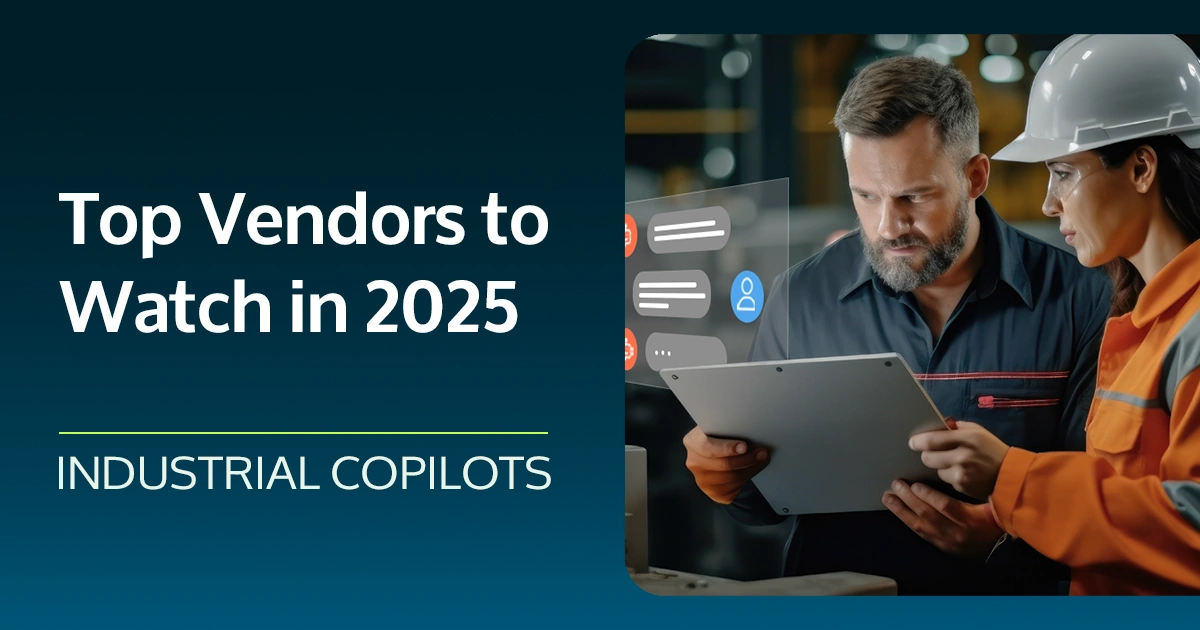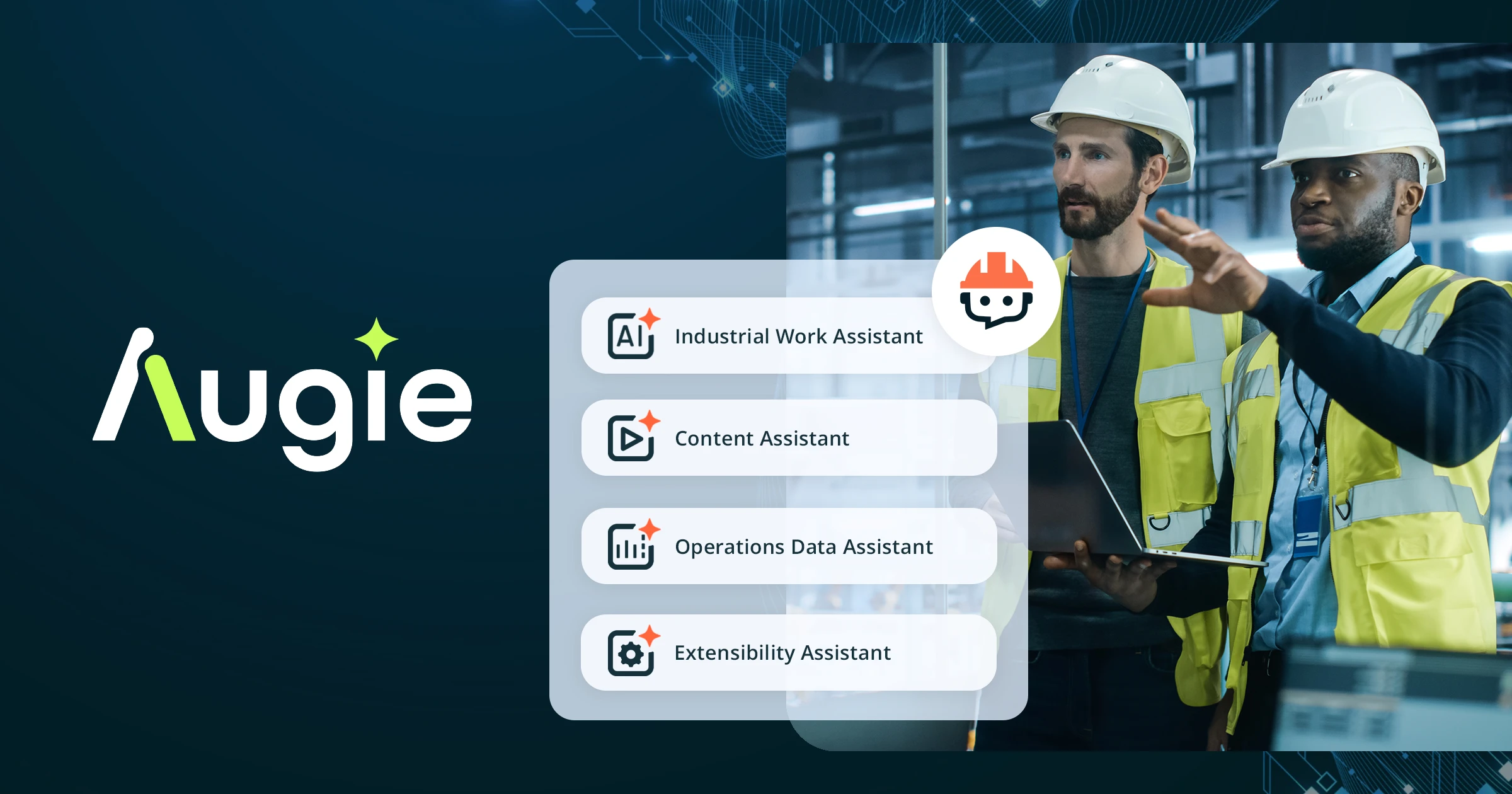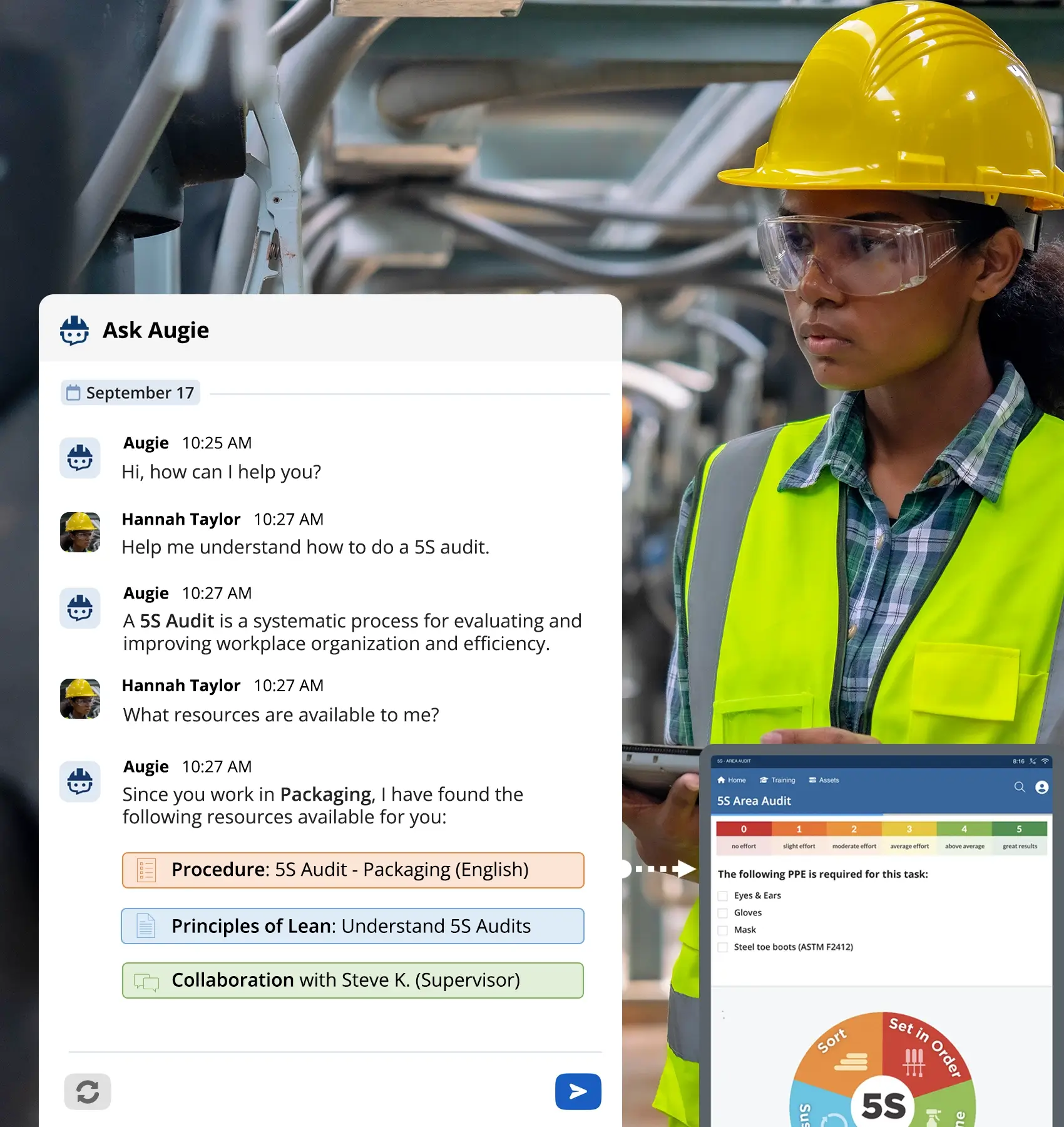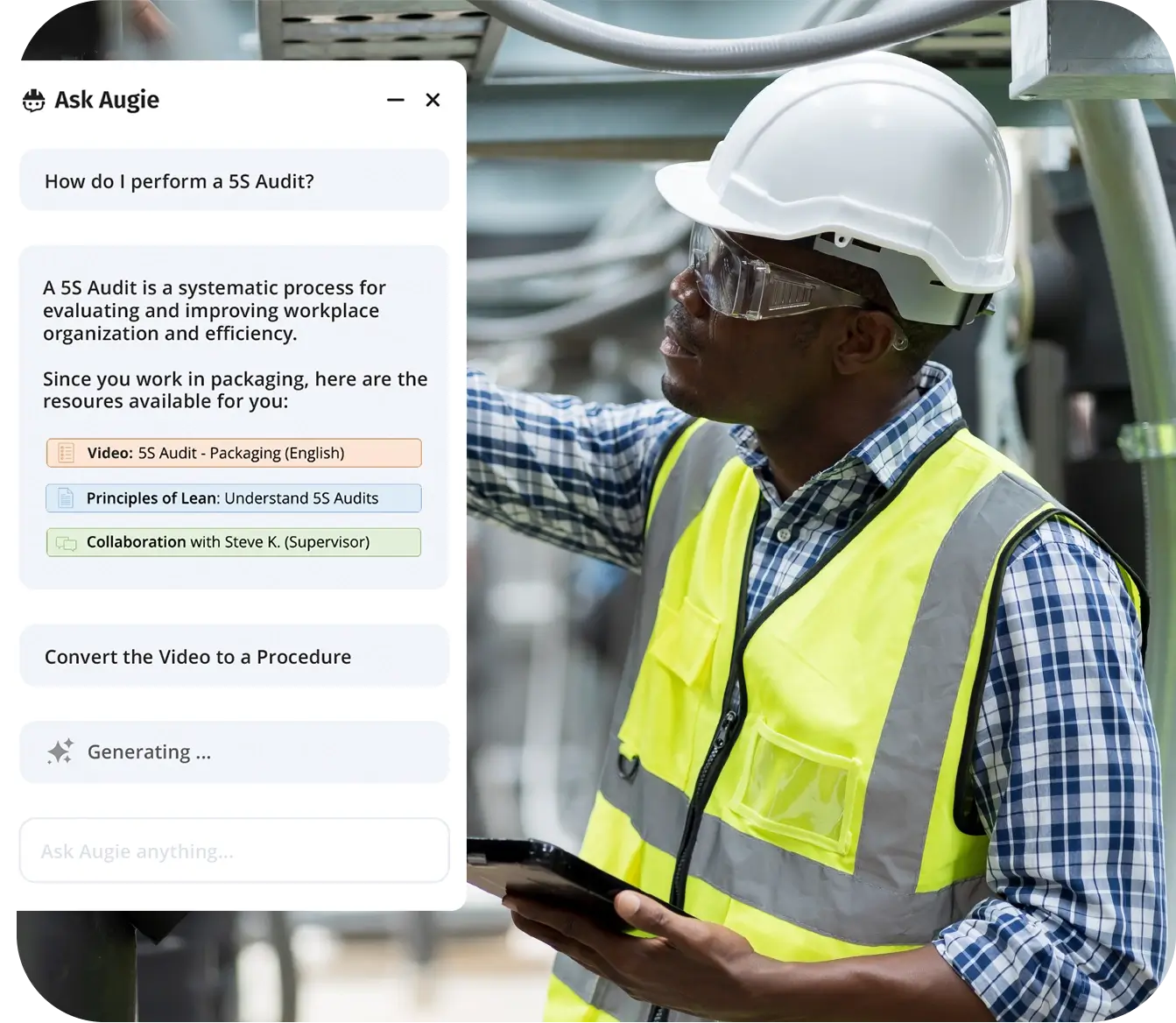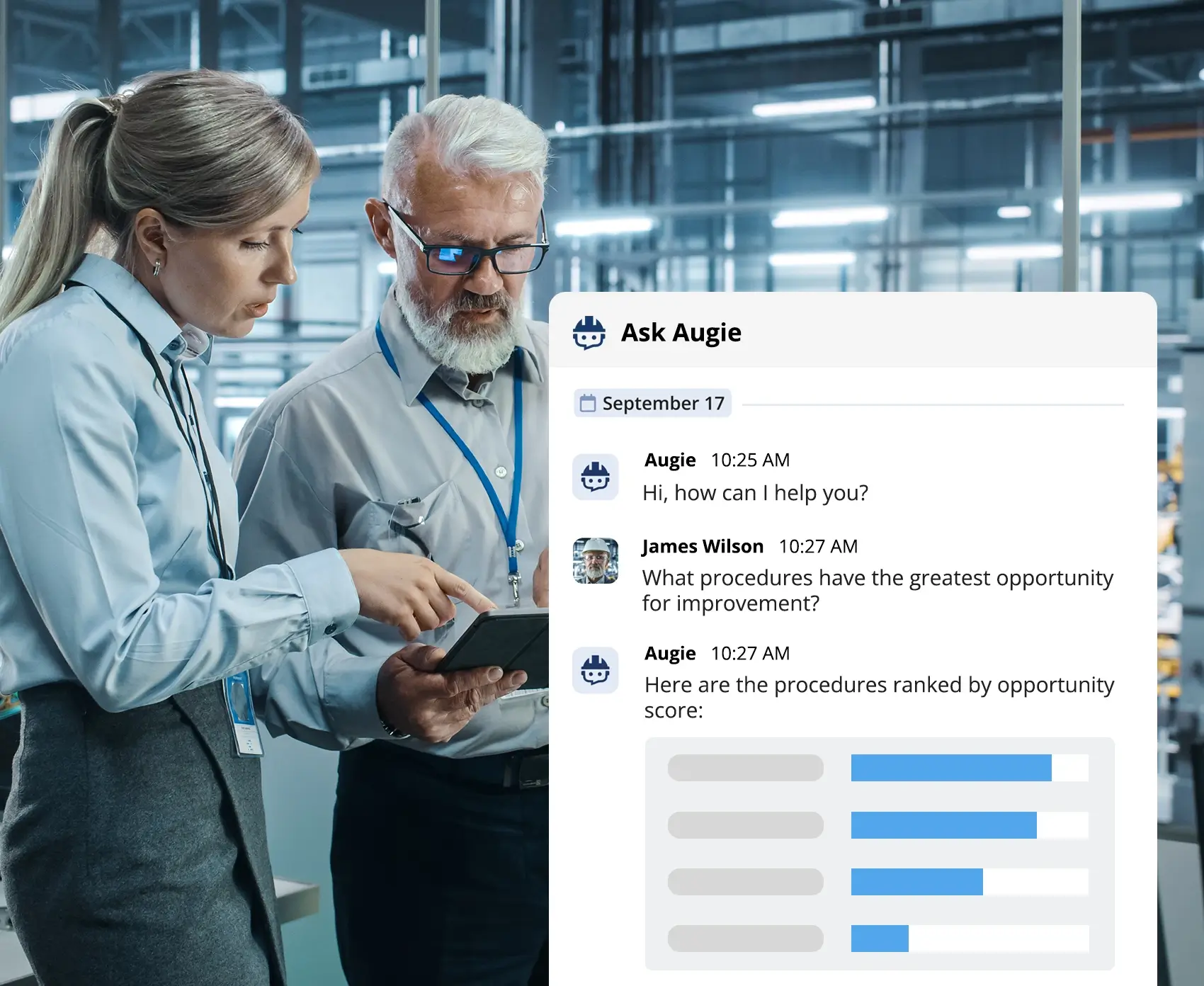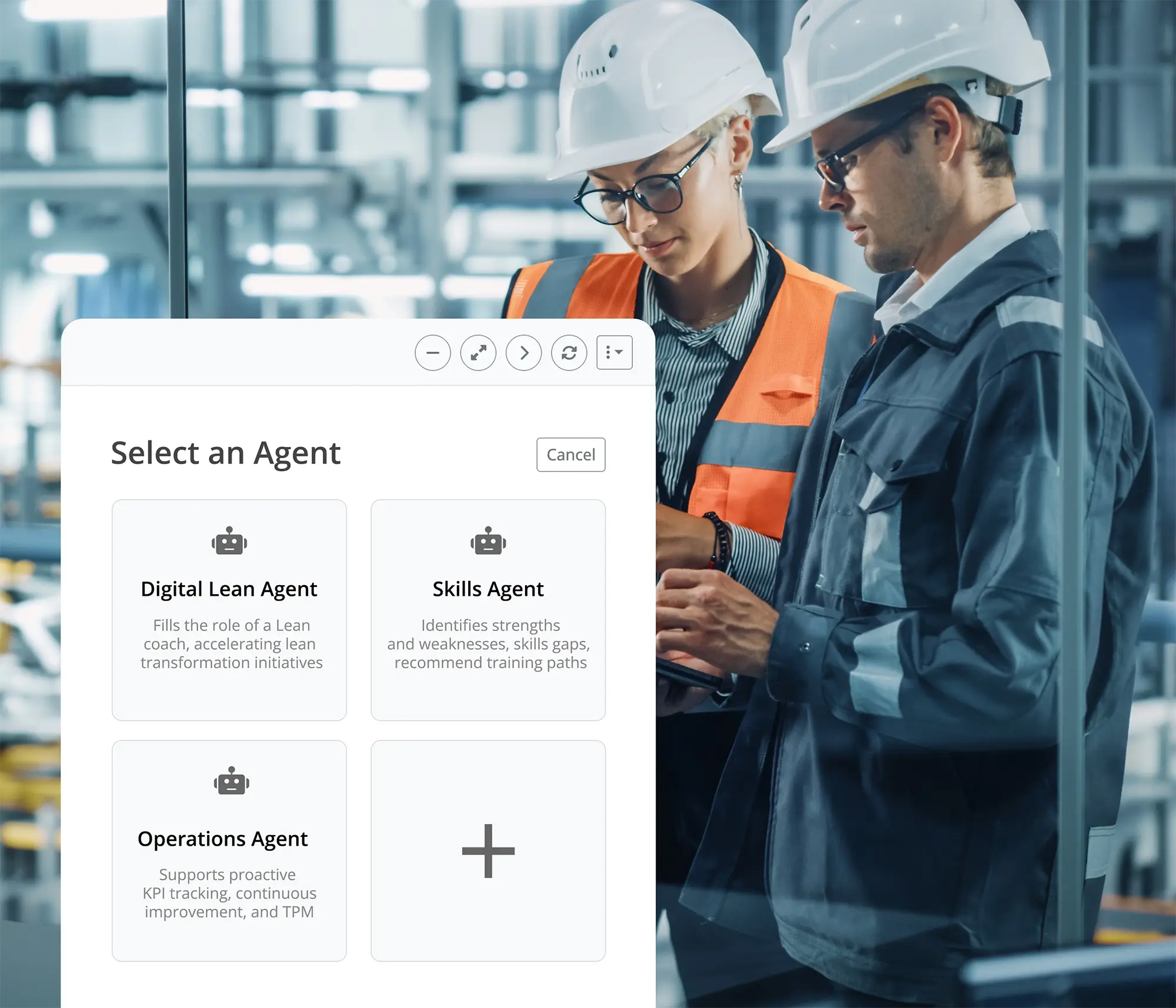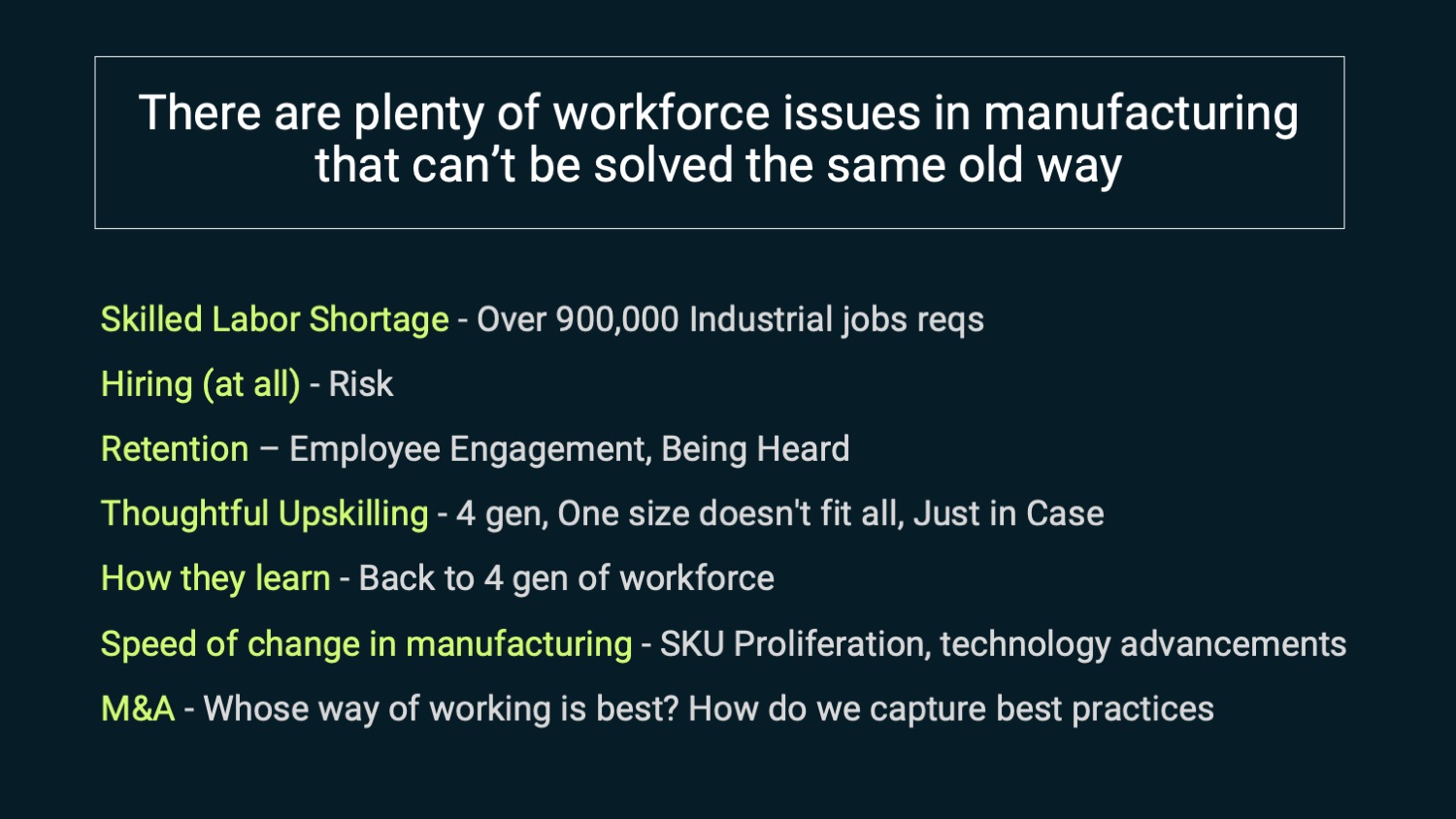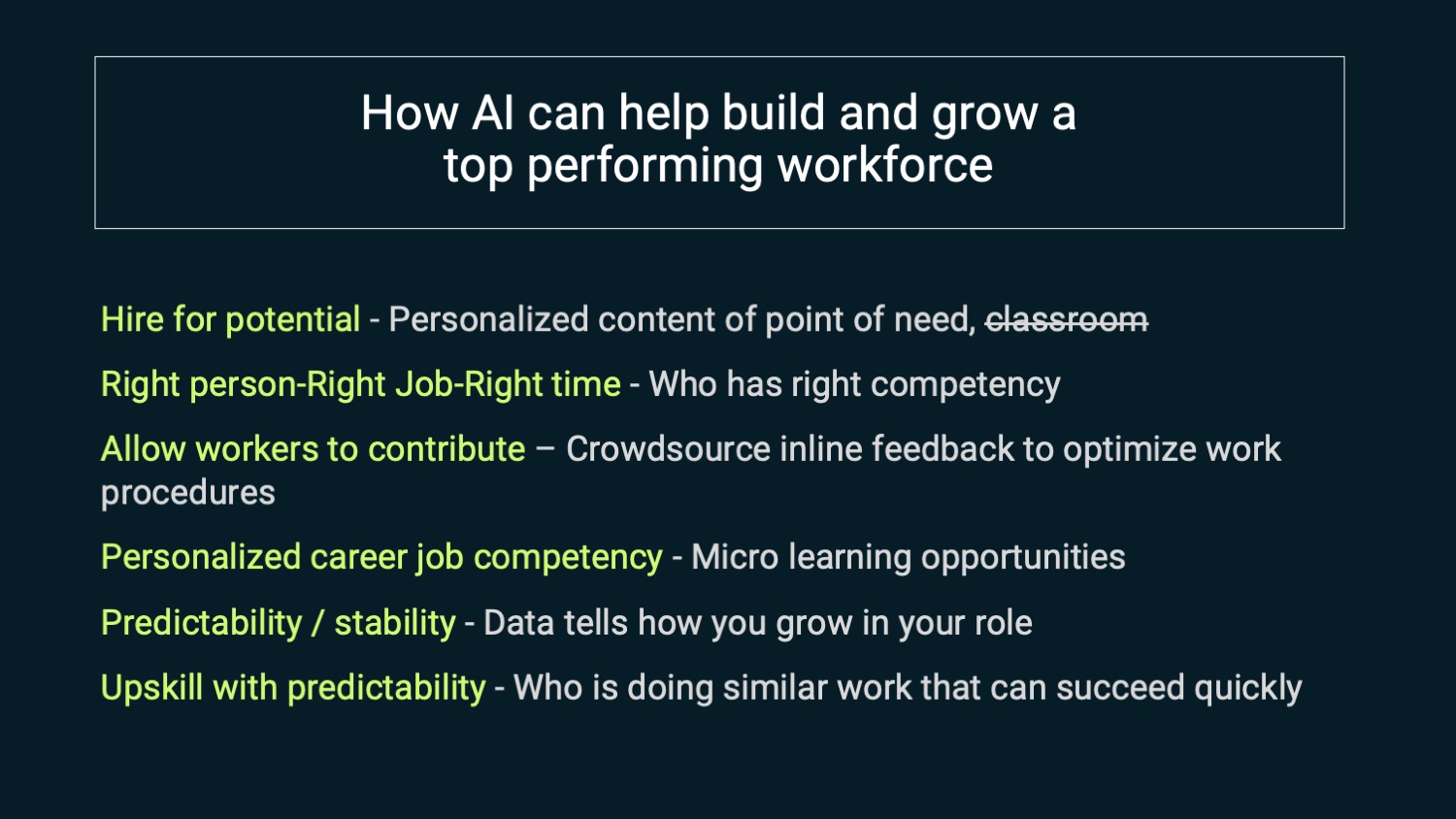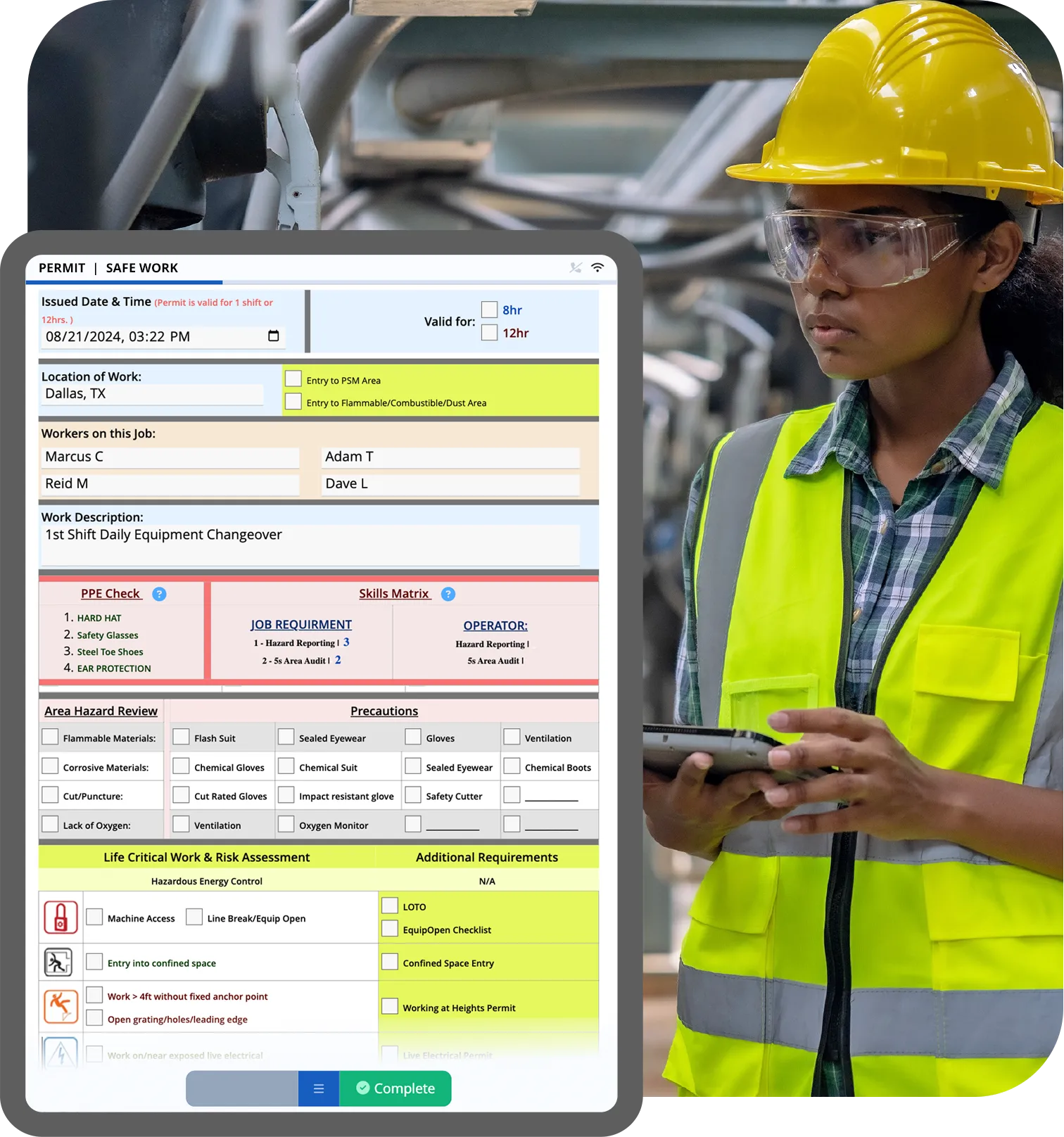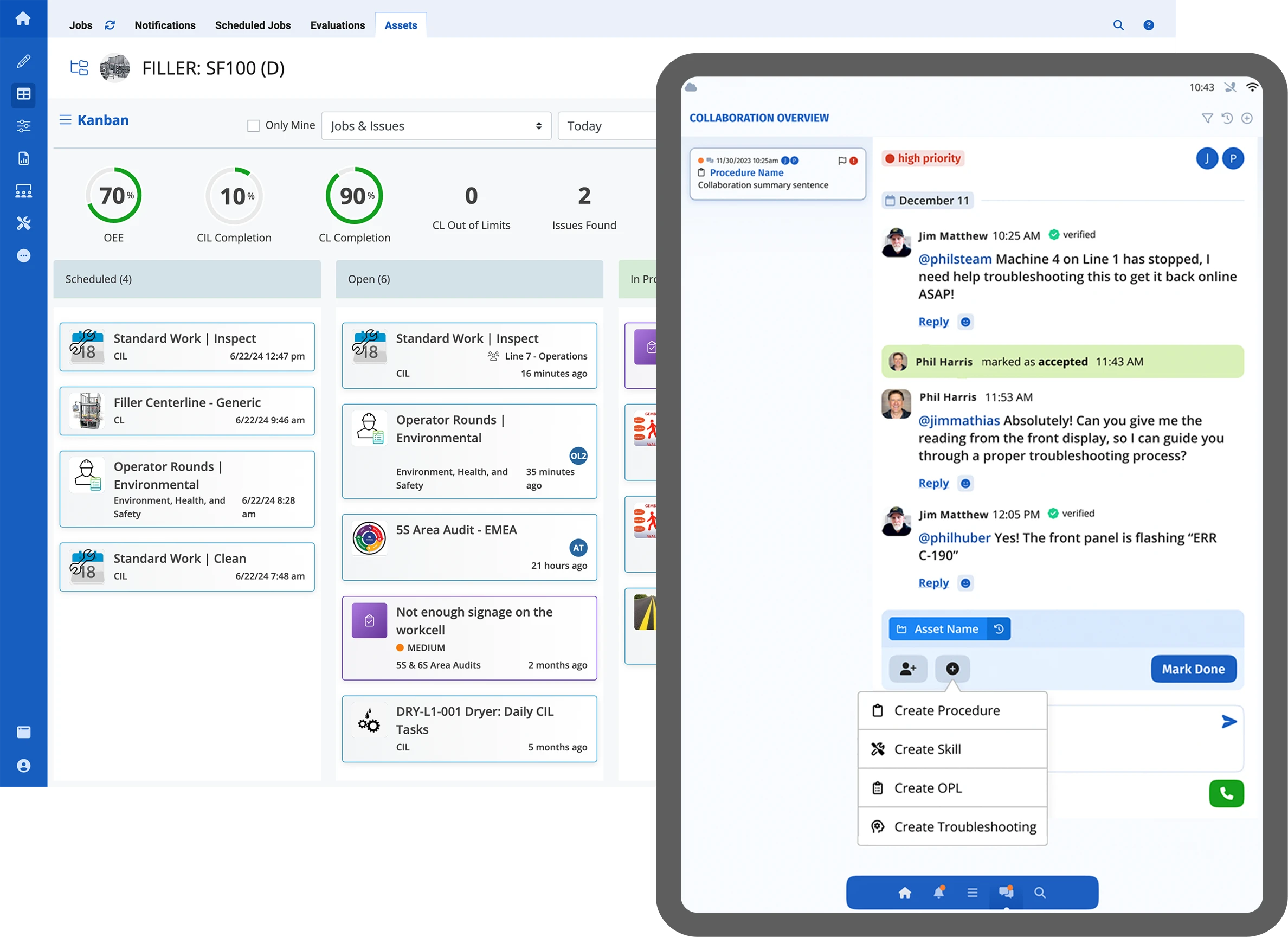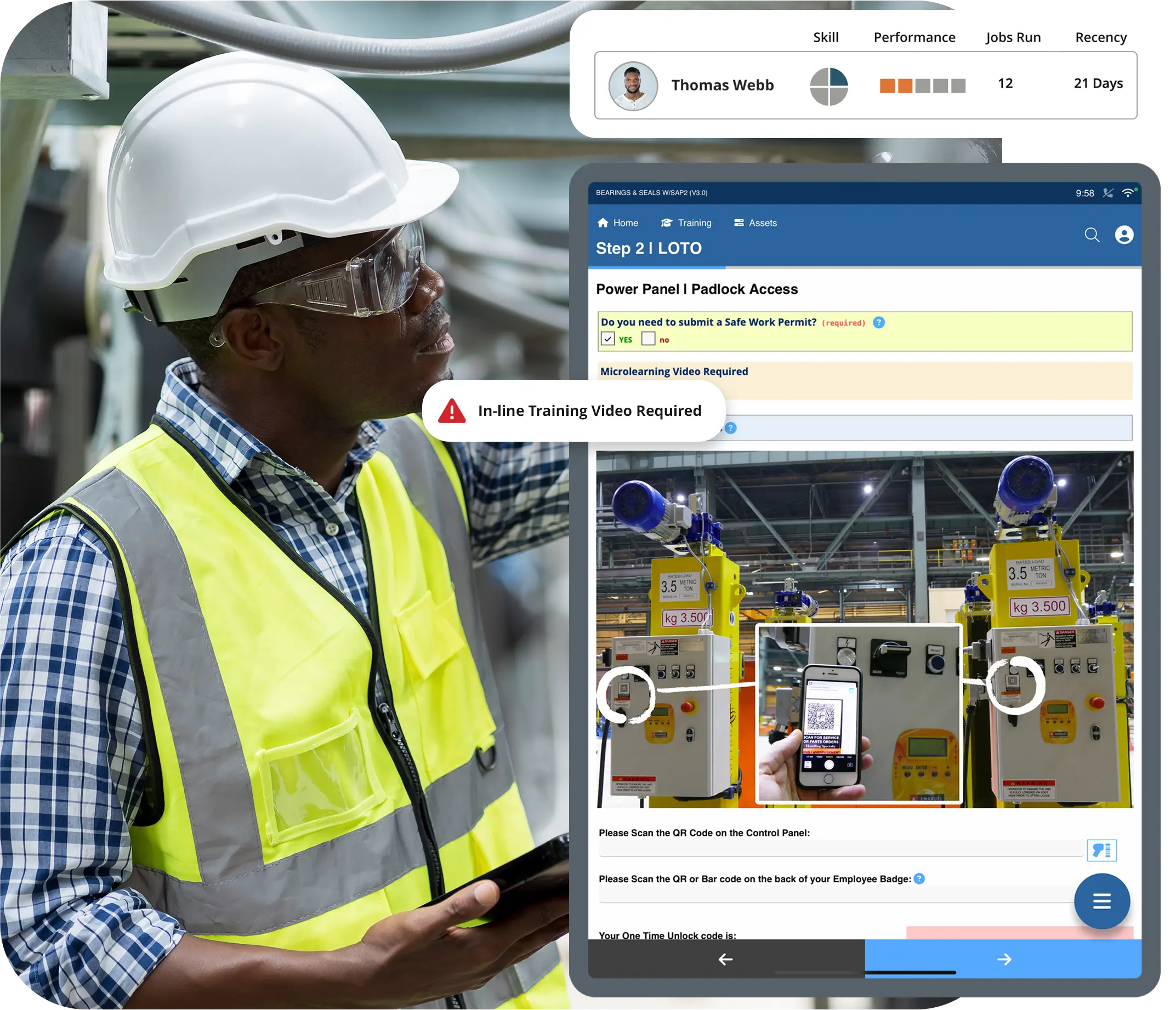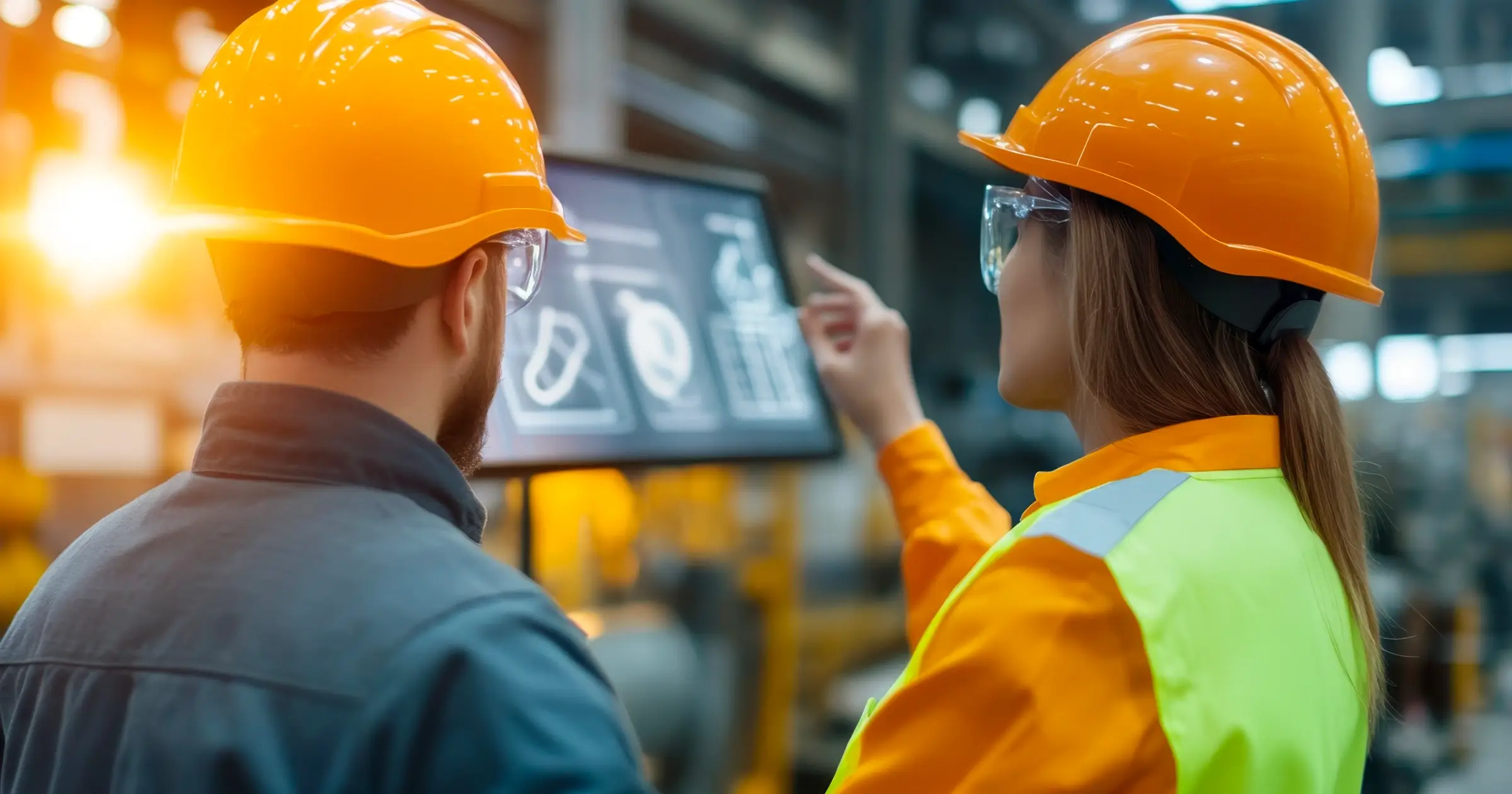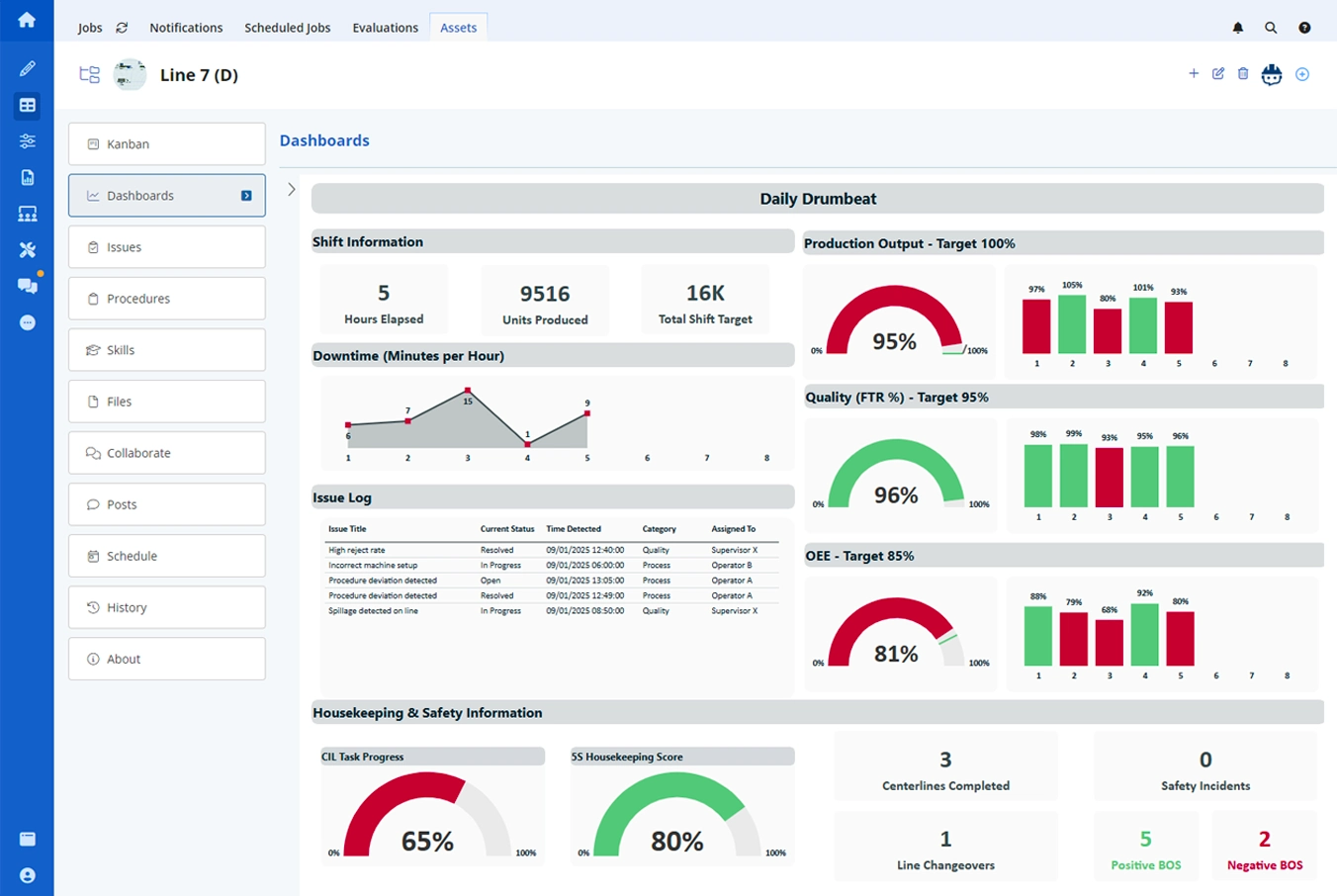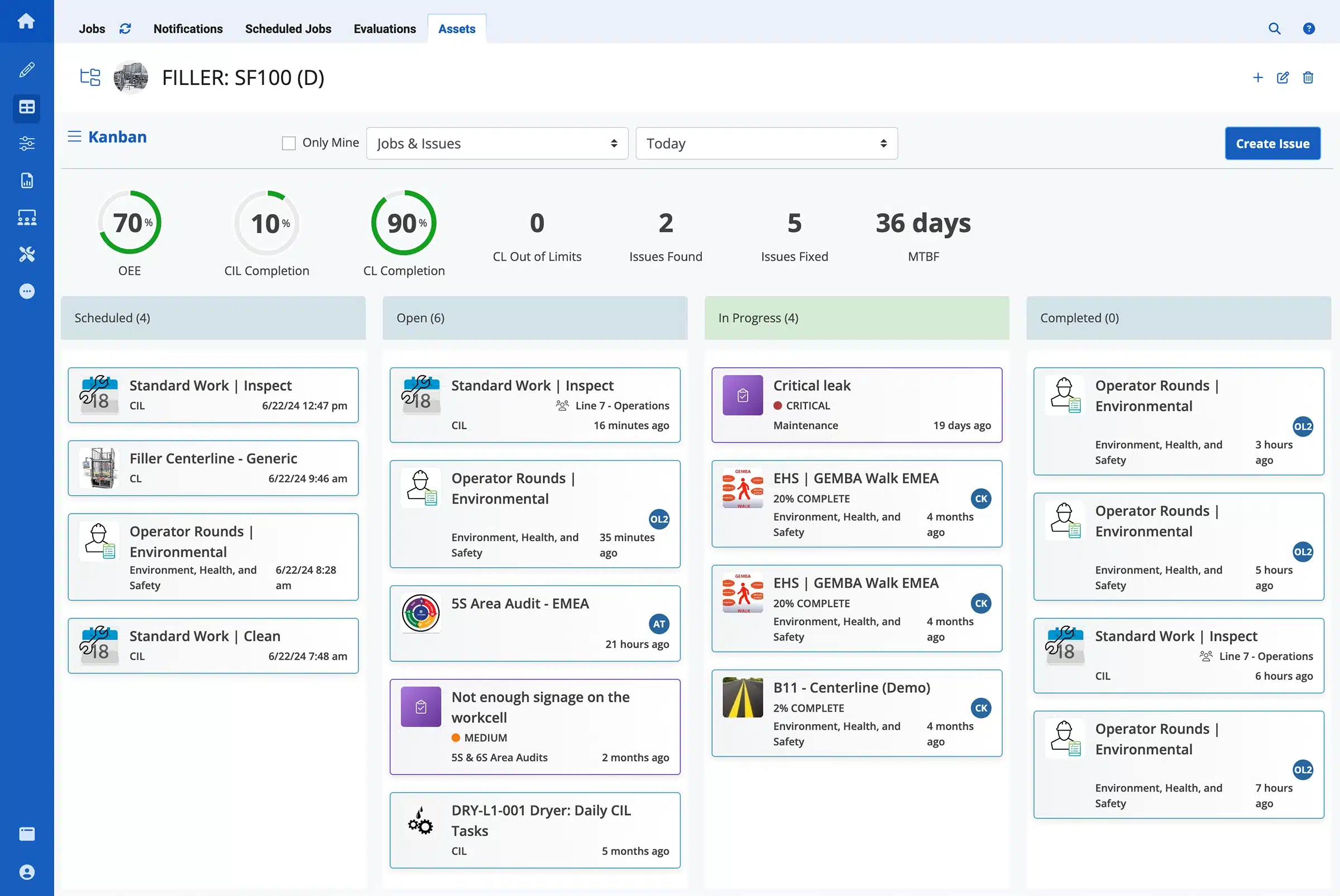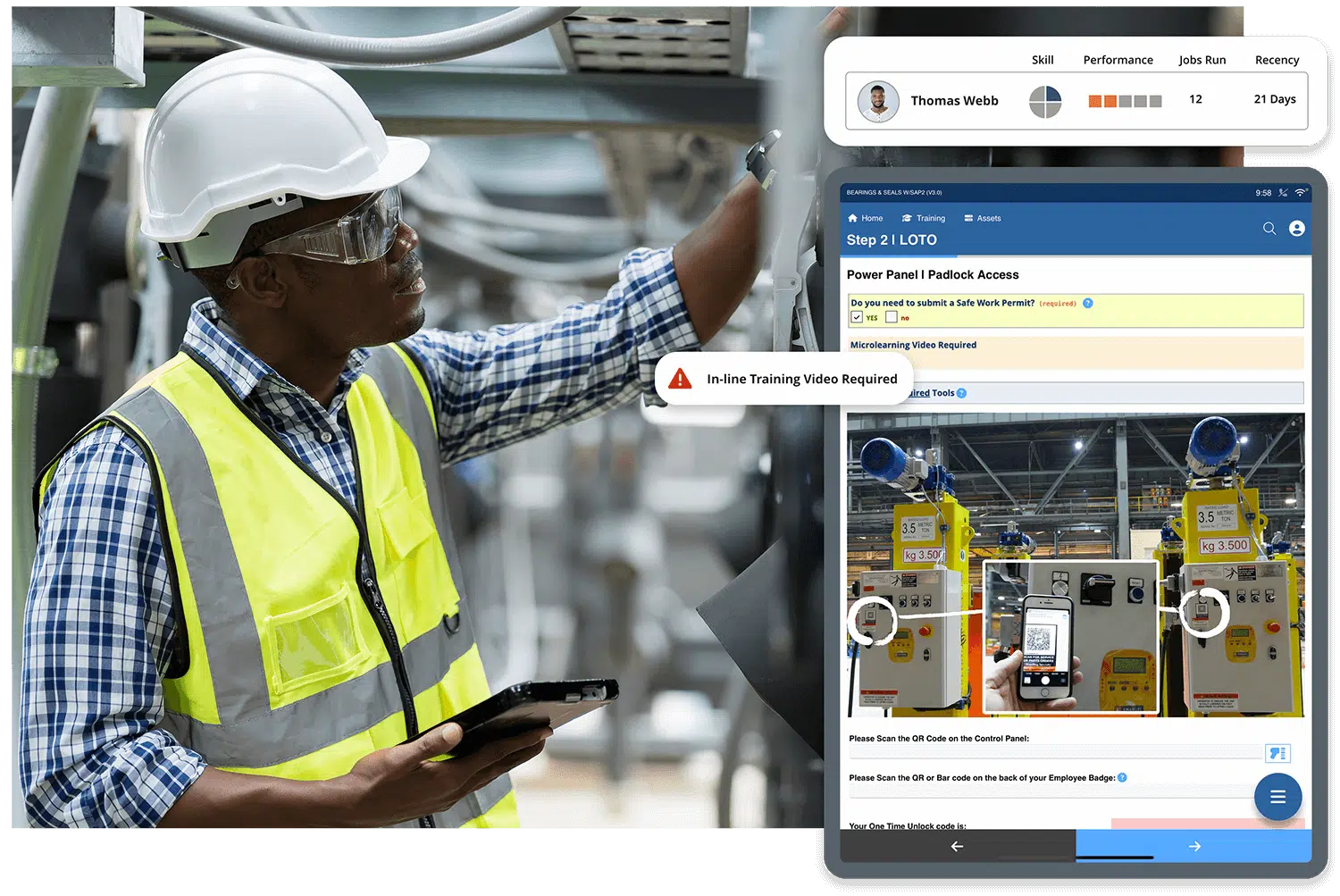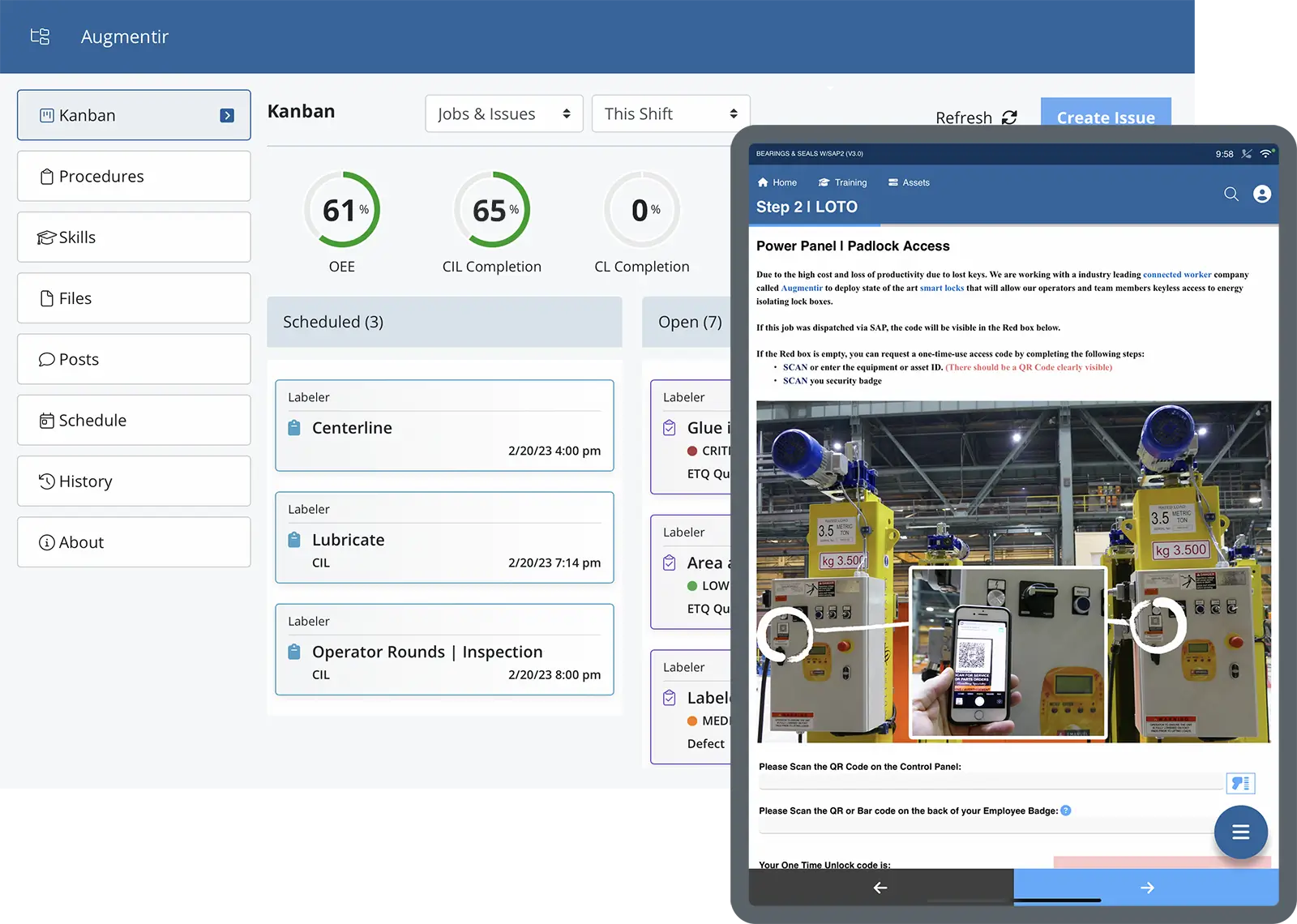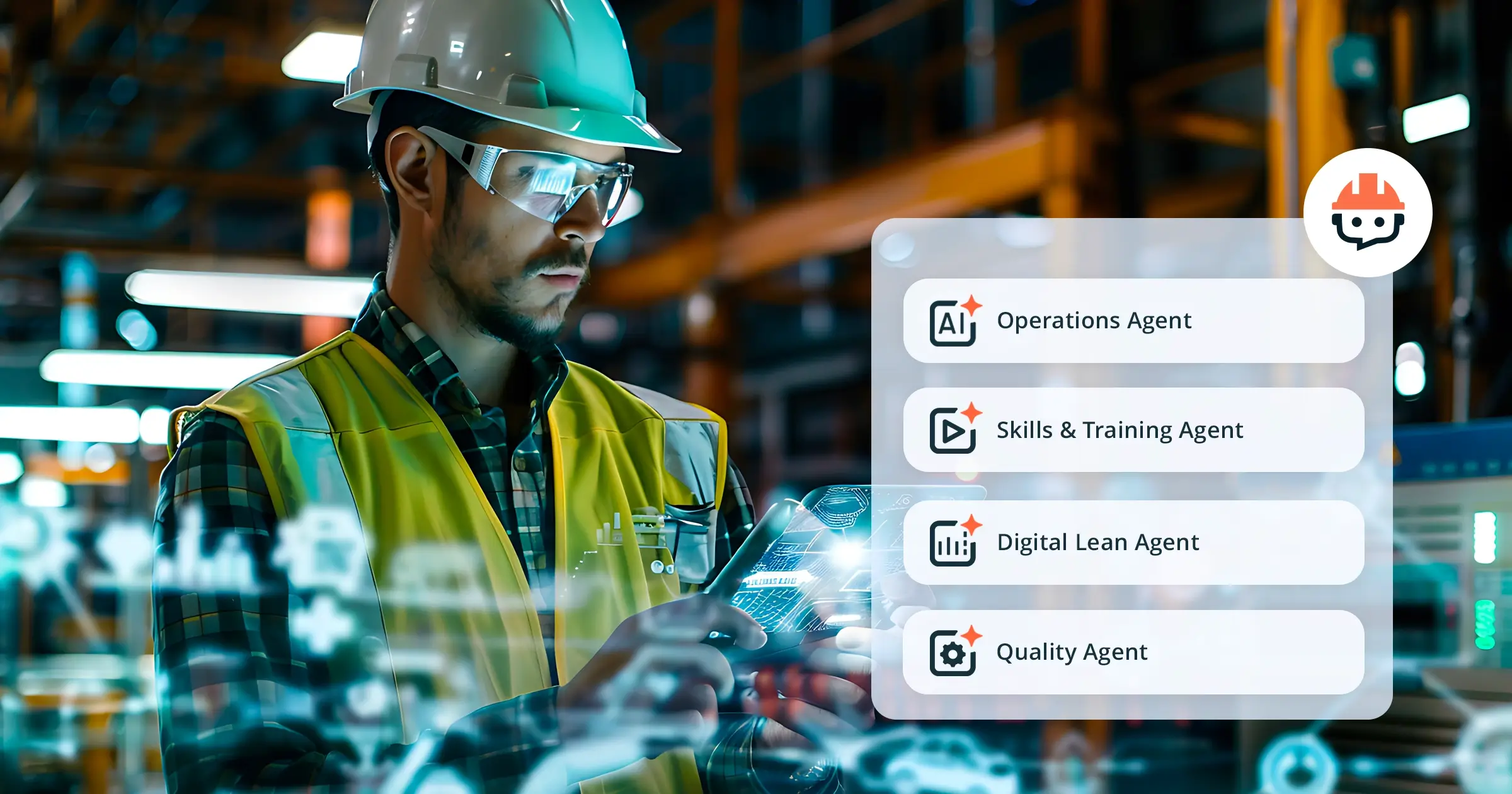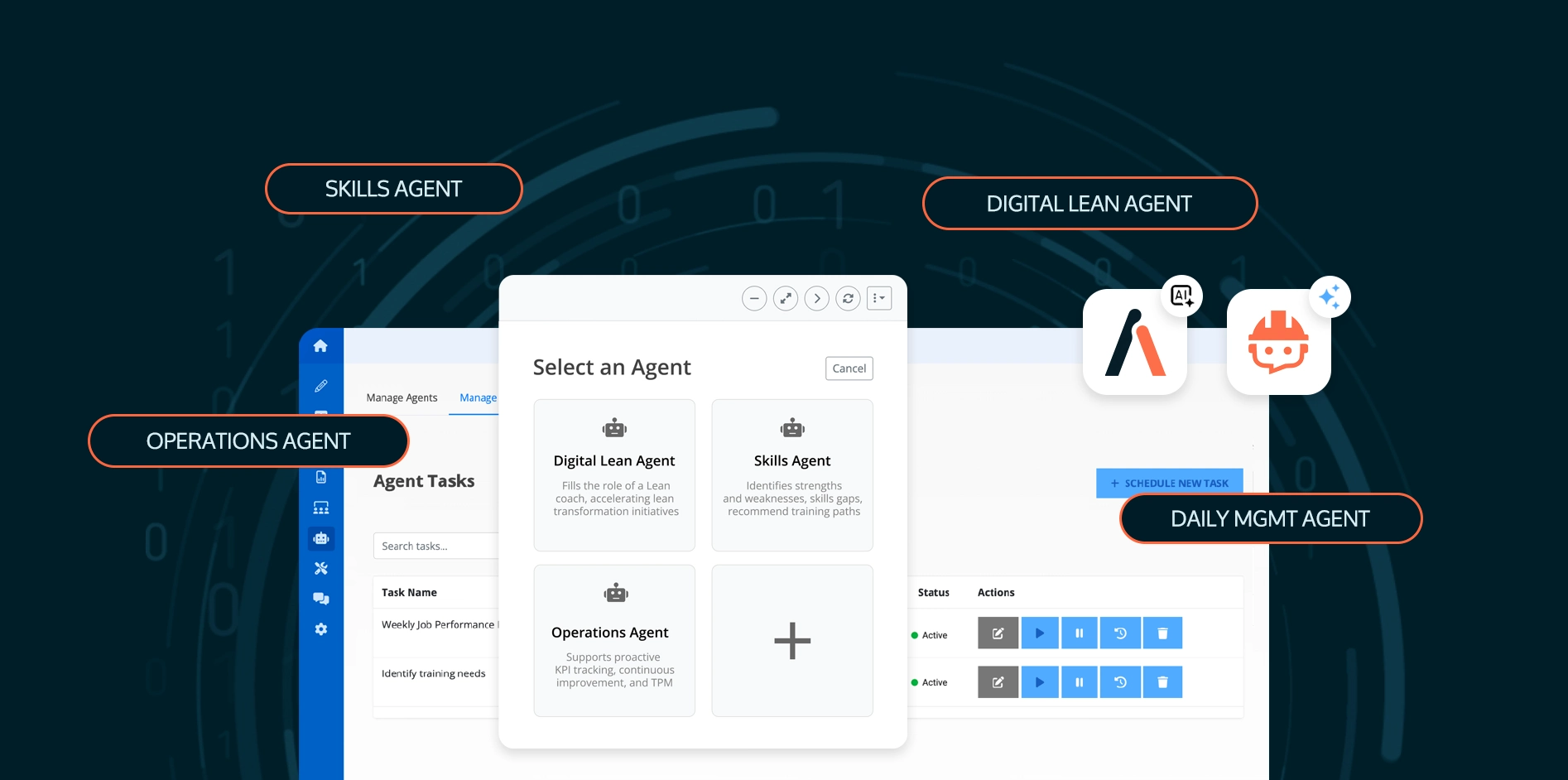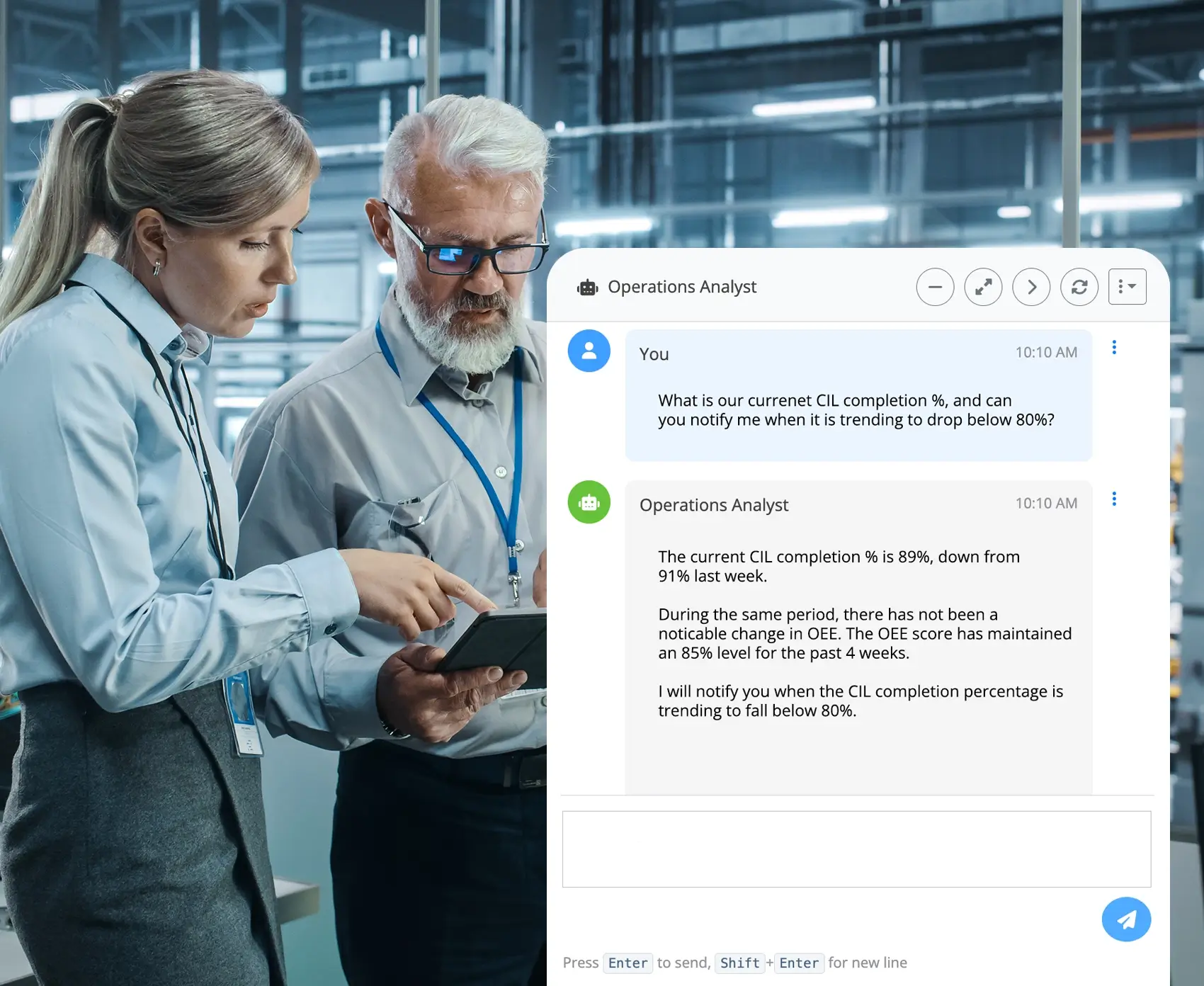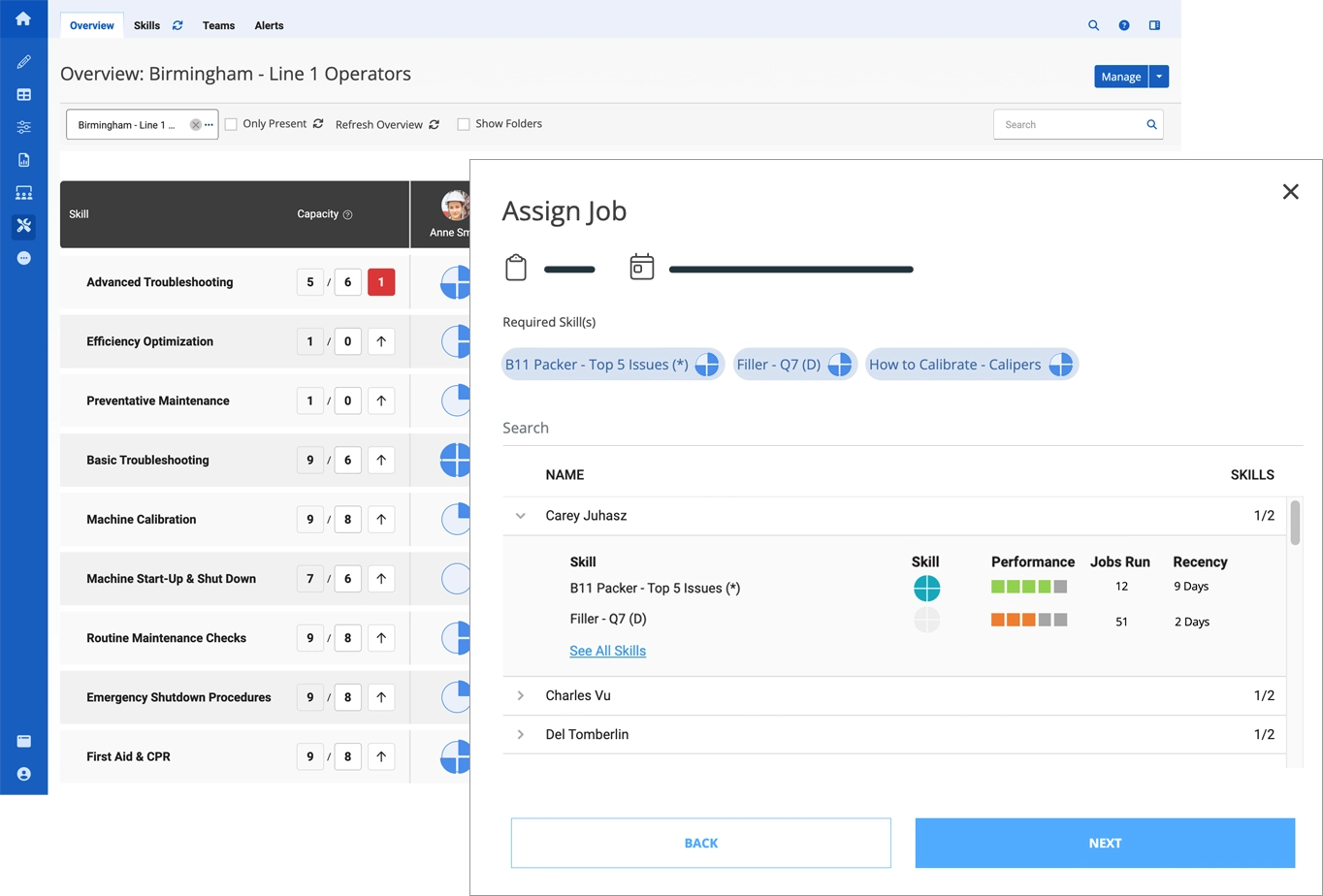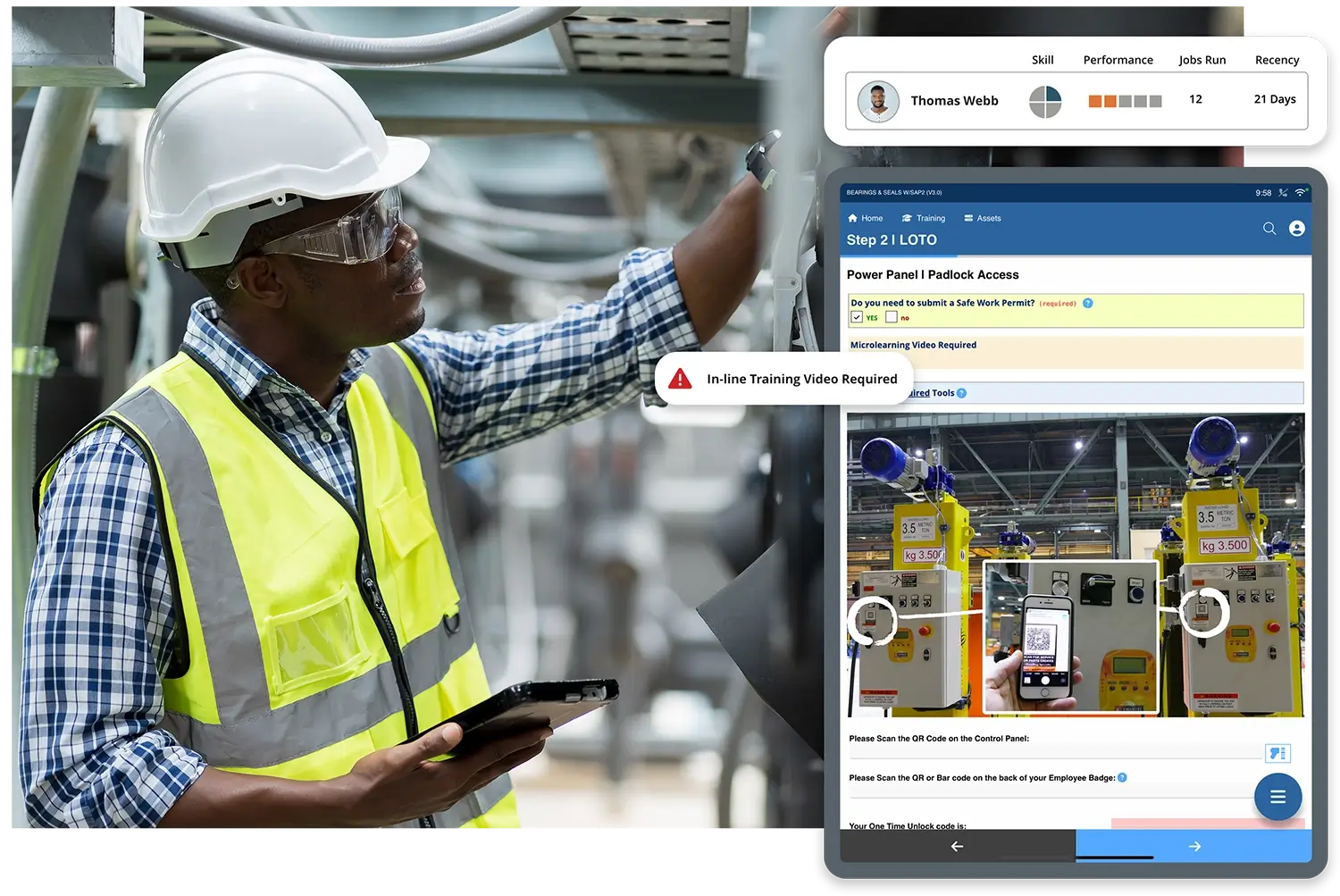Augmentir was recently recognized by Verdantix as one of the top 10 best AI-powered industrial copilot vendors offering comprehensive solutions for workforce management and productivity efficiency.
Generative AI Industrial Copilots—AI assistants powered by large language models (LLMs) and tailored for manufacturing environments—are rapidly becoming essential tools for modern manufacturers. These copilots provide frontline workers and engineers with real-time, context-aware guidance, troubleshooting support, and automated documentation, all through natural language interactions.
Their rise is driven by critical industry challenges: a widening skills gap as experienced workers retire, ongoing workforce shortages, and the urgent need to boost productivity and operational efficiency. By capturing institutional knowledge and delivering it instantly to less-experienced workers, industrial copilots help manufacturers maintain performance, reduce downtime, improve safety, and accelerate digital transformation efforts.
Verdantix, an independent research and advisory firm that provides data-driven insights and strategic guidance on digital strategies for industrial organizations, recently covered the topic of generative AI industrial copilots in a market insights report. Verdantix’s market insight report highlights 10 innovative industrial copilot vendors delivering robust solutions for workforce management and productivity optimization. Industrial leaders can leverage this report to deepen their understanding of AI-driven technologies and explore how these solutions can support their own industrial transformation efforts.
Augmentir was recognized by Verdantix as one of the Top 10 Gen-AI-powered Industrial Copilot Vendors to Watch for 2025.
Top 10 Industrial Copilot Vendors
Here are the top 10 GenAI-Powered Industrial Copilot Vendors To Watch In 2025 as reported by Verdantix:
- Augmentir – Augmentir’s generative AI assistant, Augie™, is a transformative tool designed to enhance industrial operations by providing real-time, context-aware support to frontline workers. Augie integrates data from various sources—including operational systems, training modules, and workforce management platforms—to deliver personalized guidance, streamline workflows, and facilitate rapid content creation.
- ABB – ABB’s Genix Copilot, developed in collaboration with Microsoft, integrates large language models like GPT-4 to enhance industrial operations. It provides real-time, contextual insights to improve efficiency, productivity, and sustainability across sectors such as energy and utilities.
- AVEVA – AVEVA, now part of Schneider Electric, has developed an Industrial AI Assistant, built on Microsoft Azure, that offers a conversational interface for users to access and summarize operational data. This assistant aims to improve decision-making and efficiency in industrial processes.
- C3 AI – C3 AI‘s Generative AI Suite provides domain-specific solutions to assist technicians with equipment troubleshooting and reduce training time. The suite enables enterprise users to rapidly access and act on data through intuitive search and chat interfaces.
- Cognite – Cognite‘s Generative AI Copilot, integrated within its Data Fusion platform, delivers real-time, contextualized insights for industrial operations. It enhances decision-making by providing a centralized view of industrial data, aiding in safety, reliability, and quality management.
- IBM– IBM’s Copilot Runway assists enterprises in creating, customizing, and managing AI copilots, including integration with Microsoft 365. This offering aims to enhance productivity and drive business transformation through seamless AI adoption.
- Nanoprecise – Nanoprecise’s ReKurv.ai is a generative AI solution designed for maintenance professionals in industrial environments. It offers real-time, contextual answers based on equipment behavior and operational data to enhance decision-making on factory floors.
- Palantir – Palantir’s Artificial Intelligence Platform (AIP) connects AI with data and operations to drive automation across processes. It provides tools for building AI-driven functions and managing agents, facilitating real-time decision-making in critical contexts.
- Siemens – Siemens’ Industrial Copilot, developed with Microsoft, is a generative AI assistant designed to enhance human-machine collaboration. It assists staff in designing products and organizing production and maintenance processes, aiming to improve productivity across industries.
- SymphonyAI – SymphonyAI offers AI-driven solutions tailored for various industries, focusing on enhancing operational efficiency and decision-making. Their platforms integrate generative AI to provide actionable insights and improve business outcomes.
These companies, along with Augmentir, represent a transformative shift in how industrial leaders are deploying GenAI—not just to automate tasks, but to empower frontline workforces and drive measurable operational gains.
Key Benefits of Industrial Copilots
Industrial copilots offer a range of transformative benefits across operations, maintenance, training, and safety. Here are some of the key benefits:
Operational Efficiency & Productivity
- Task Automation: Copilots can automate repetitive administrative tasks such as work order generation, data entry, and scheduling, freeing up time for skilled workers.
- Real-Time Assistance: Provide workers with instant access to SOPs, manuals, and troubleshooting guides, improving first-time fix rates and reducing downtime.
- Intelligent Recommendations: Suggest optimal next steps, tools, or parts based on contextual data, enhancing decision-making on the shop floor.
Data-Driven Insights
- Contextualized Information: Copilots integrate data from multiple sources (ERP, CMMS, sensors, IoT) and present it in a unified, actionable format.
- Anomaly Detection: Use AI to detect trends or anomalies in equipment performance or worker activity that could indicate operational risks or inefficiencies.
Knowledge Retention & Training
- Just-in-Time Learning: Provide on-demand guidance and microlearning in the flow of work, tailored to workers’ roles and skill levels.
- Knowledge Capture: Automatically document expert procedures and best practices to ensure tribal knowledge is retained and reused.
Safety & Compliance
- Proactive Hazard Alerts: Warn workers of unsafe conditions based on environmental data, worker behavior, or equipment status.
- Audit Support: Maintain up-to-date logs and documentation for compliance with industry regulations and standards.
Scalability & Workforce Empowerment
- Support for Multi-Lingual & Diverse Teams: Enable consistent communication and guidance across geographically dispersed and multilingual teams.
- Worker Empowerment: Give frontline workers more autonomy through AI guidance, increasing engagement and reducing reliance on supervisory intervention.
Augie™: An Industrial Copilot to Empower the Frontline Workforce
Introduced in early 2023, Augie™ is an industrial copilot designed specifically for the industrial frontline. Unlike traditional tools that rely heavily on equipment data alone, Augie™ integrates insights from frontline operations, training, engineering, and workforce data to deliver real-time, contextual support to frontline workers and supervisors.
Key Features Behind Verdantix Recognition
Verdantix highlighted Augmentir due to several standout capabilities within the Augie™ industrial copilot:
Industrial Work Assistant
Provide real-time support and guidance to workers on the floor or in the field. Augie helps workers with standard work, troubleshooting, and information access.
Content Assistant
Automatically converts standard files (Word, Excel, PDFs) into smart digital workflows such as SOPs and checklists. Augie can take your existing content and generate digital, smart forms, checklists, and interactive work procedures. Augie accelerates your transition to a paperless operation, and provides a robust tool for capturing tribal knowledge and converting it into digital corporate assets.
Operations Data Assistant
Interpret operational data through natural language queries, eliminating the need for complex reports or dashboards. The Augie industrial copilot helps operations leaders gain insights into your frontline operations by understanding and summarizing your operational data, generating reports, and providing insights into continuous improvement opportunities.
Extensibility Assistant
Offers developers tools to build custom GenAI experiences through user-defined functions and APIs. The Augie Extensibility Assistant from Augmentir empowers industrial companies to go beyond basic generative AI by enabling more intelligent and autonomous support for frontline operations. Through its seamless integration with Augmentir’s AI Agent Builder, Augie allows users to create and deploy AI agents that can interact with and analyze operational data, trigger automated workflows, and respond contextually to frontline needs. This extensibility framework lets manufacturers tailor AI assistance to their unique environments—connecting to third-party systems, retrieving and acting on data, and continuously learning from worker behavior and outcomes. The result is a scalable, adaptive solution that extends GenAI from simple question-answering to proactive, intelligent task support across the digital thread.
Solving Real Industrial Challenges
The industrial sector faces a range of challenges: growing skills gaps, legacy processes, inconsistent quality, and labor shortages. Augie™ directly addresses these by:
- Boosting workforce performance with personalized, AI-driven task support.
- Improving decision-making via fast access to operational and procedural knowledge.
- Accelerating continuous improvement by uncovering inefficiencies through embedded data analytics.
The Future of Frontline Work, Powered by the Augie Industrial Copilot
Augmentir’s inclusion in Verdantix’s Top 10 GenAI Industrial Copilot Vendors watch list underscores its leadership in shaping the next generation of intelligent, AI-powered industrial tools. As frontline work evolves, platforms like Augie will be instrumental in bridging workforce gaps, maximizing productivity, and enabling safer, smarter operations.
Request a demo and see how Augie is redefining frontline performance.

